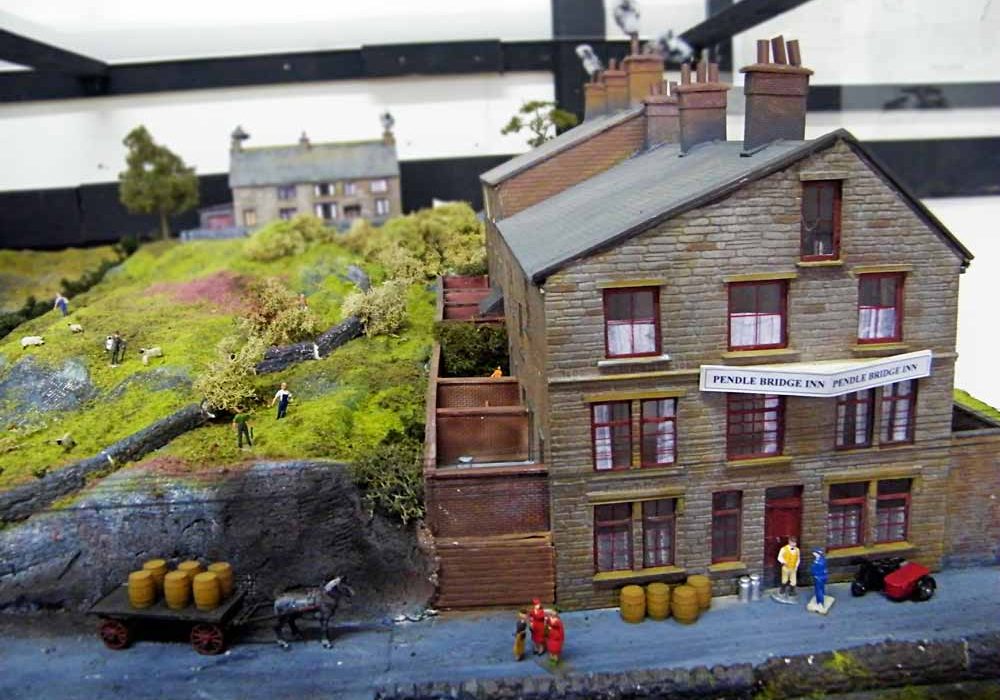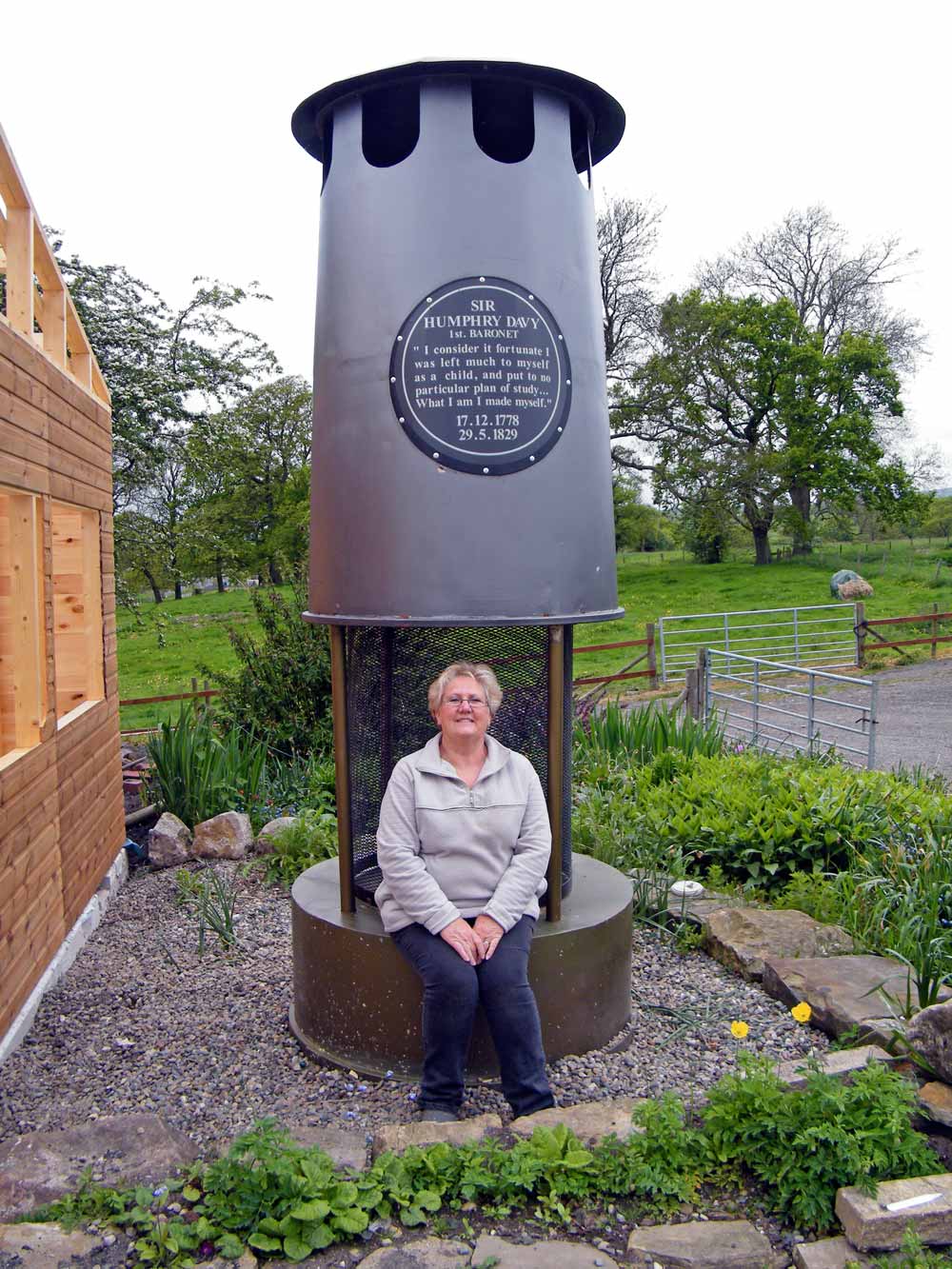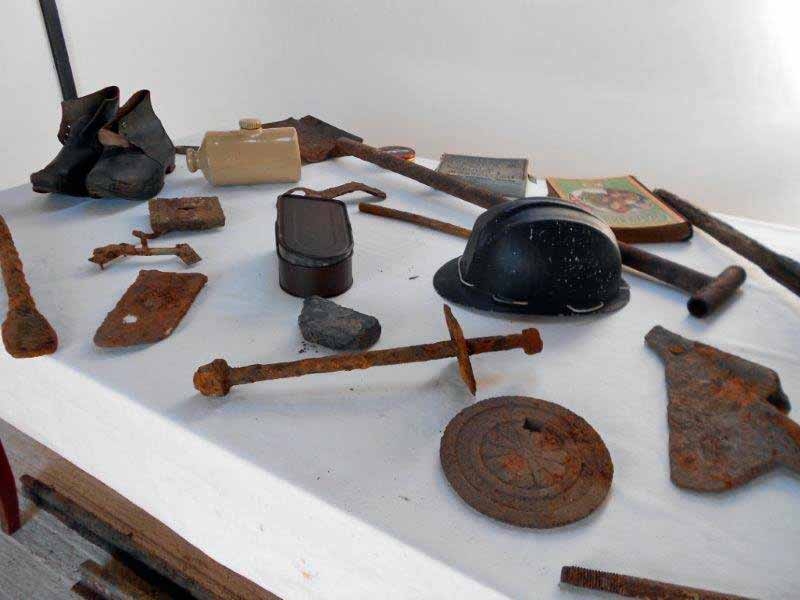
It’s All Mine – Woodend Mining Museum
by David Hall
When Carole and Harry Johnson bought a plot of land at Woodend, near Burnley, it was to be the site of a camping and caravan park.
But in the process they discovered that one of Burnley’s many coal mines had previously been on their land and so, alongside the original project, the Woodend Mining Museum was born.
“It was something of an accident,” explained Carole. “We knew there were mines in the area – the land search had revealed that – but when we visited the site on the first day we took ownership a representative of the Mining Authority came and explained that the old mine shaft, hidden under a huge tree and a lump of concrete, would have to be capped as a security measure.
“They came and did that and, while we were clearing that area, we kept finding rusty iron objects which were tools used by the miners.”
They proved the catalyst which gave Carole the vision for a mining museum – a complete contrast to the tranquillity of the site with its surrounding countryside.
‘‘In Lancashire there were many cotton mills and some have become museums and others are used as shops or offices, but when they closed a mine everything was dumped down the shaft and it
was blocked. There are few permanent reminders and yet it was one of our key industries – providing the fuel which kept those mills and other industries going.”
In the process of opening the museum, Carole has met and befriended many former miners, some of whom actually worked at the Woodend pit.
“They are all so interesting and the tales they tell are fascinating,” Carole said.
- model of mine showing pub nearby – now a house
- Carole by huge Davy Lamp – the entrance to the museum site
- First artifacts discoveres on the site
- Part of the exhibition showing how miners lived
- Model of Mine
- Model of the mine as it was
So much so, in fact, that she holds regular reunions for an increasing number, and many of the grateful former mine workers donate personal items to the museum. Among the items is a hard-hat and its lamp given by Bert Wilkinson, who also did a sketch of the site as it was in its heyday.
‘‘They pointed out that if they didn’t give it to me and allowed it to be given some sort of historic significance it would probably be thrown on to a skip when they passed away,” Carole said. ‘‘In fact they help provide a brilliant insight into how the mines worked, just how tough a working environment it provided, but also the huge camaraderie among the men.”
The museum is a wonderful glimpse into the past, revealing the extent of mining in Lancashire and the home lives of those who worked in the industry. There are items from the local area as well as pieces that the couple have acquired or bought to expand the museum and its view of mining.
It includes a large model of the mine and surrounding area which was commissioned from a specialist model maker to give a brilliant visual portrayal of Woodend Colliery which was opened in 1912 and closed in 1959 – the last vertical shaft to be sunk in the area. The model also includes a nearby row of cottages and a pub, The Pendle Bridge Inn, which closed some years ago and is now a private house.
Among the key exhibits are a series of china plates depicting various mines, including one identifying Lancashire collieries, a large map of the Lancashire coalfields originally done on vellum, but now copied on to a more permanent polycarbonate sheet. There is even the wall-mounted telephone which was used to contact the various offices in the colliery or men working on each of the five levels off the 700 ft shaft at Woodend.
Carole – who has already successfully conducted two appeals for Lottery cash to help the project – allows her mind to work overtime thinking of further innovations.
‘‘I want to set up an oral history project involving local schools and allowing some of the former miners to record their memories.”
Another plan is to get a small aircraft to fly over the Burnley area to create a DVD which will have visions of the mines of the past superimposed onto today’s countryside.
‘‘That will enable those who do not remember the mines to at least get a picture of how the area looked and how great was the contribution of mining.”
All this is done alongside the running of the camping and caravan site – which already has a well-appointed toilet block and the finishing touches are being made to a restaurant where she serves breakfast to those visitors requesting it. The couple also have a rescue home for Shetland ponies, and any other animal she feels sorry for, a sale room for plants (produced by a group helping those with learning difficulties) and sell jam, marmalade and chutney which she makes.
Oh, and there is also the annual glorious display of the 100,000 daffodils she and Harry planted years ago for which she has organised an open day for the last three years.
On 13 September this year the Mining Museum will also feature in the National Heritage Day programme, providing an ideal opportunity for visitors to enjoy her hard work and the opportunity to see just how much influence the mining industry has had in Burnley’s historic story.
Pride of place on that day will be the entrance to the site – a huge miner’s lamp created in memory of Humphrey Davy who invented the safety lamp for use underground. It was originally made by Alan Cringle, a fabricator from Darwen, to be used as the centrepiece for a crazy golf course in Penzance where the inventor was born. But when that project was cancelled Mr Cringle heard of the couple’s plans for the mining museum and gave them the chance to buy it.
Carole admitted: ‘‘The museum started as a passion and has become an obsession.”
Harry, a part-time coach driver who takes parties all over the country and the Continent, smiled and nodded. His efforts working on the site, building low walls to add a decorative feature, and providing the muscle and support for many of the projects, in some ways go unnoticed. Together they are determined to keep attracting visitors to their camping and caravan site, to continue saving animals and helping those in need, but also to introduce to a town part of its history which has lain hidden underground for far too long.
To visit the museum or camping and caravan site call Carole on 07809274910 or email carolejohnson@talktalk.net / www.smithsonfarm.co.uk









